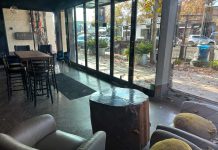The next time you’re driving along U.S. 101 toward San Jose,
take a look to your left as you near the new Bailey interchange and
picture 50,000 employees and 80,000 residents in 25,000 new homes
crammed into the 7,000 acres that are bucolic Coyote Valley
– that’s the plan rocketing toward approval by our neighbor to
the north.
The next time you’re driving along U.S. 101 toward San Jose, take a look to your left as you near the new Bailey interchange and picture 50,000 employees and 80,000 residents in 25,000 new homes crammed into the 7,000 acres that are bucolic Coyote Valley – that’s the plan rocketing toward approval by our neighbor to the north.
The next time you’re taking Santa Teresa to avoid an accident clogging U.S. 101 and spilling over onto Monterey Highway, picture this important north-south thoroughfare completely rerouted and no longer a direct route to San Jose – that’s one of the harebrained ideas being seriously considered by San Jose’s planners.
San Jose City Council member Pat Dando recently asked city staff to come up with a list of issues that will impact Coyote Valley development.
Here’s a list of issues we think Coyote Valley planners and San Jose officials ought to consider – and in many cases, reconsider – as they ponder if, when and how to develop Coyote Valley:
• Traffic assumptions – Let’s get this one right. It’s patently obvious that planners’ bullheaded insistence that 80 percent of Coyote Valley visitors will come from the north is 100 percent wrong. Drawn by jobs closer to home than North County and the Peninsula, most of Coyote Valley’s visitor will come from the south, and from as far south as Monterey, Salinas and the Central Valley.
• Education – There needs to be enough sites set aside for the elementary, middle, high school and community college campuses this development will require. The decisions on number and location of campuses ought to be done in concert with the Morgan Hill Unified School District and Gavilan Community College, not without them, which is the current mode of operation. Developers ought to be required to donate the sites to the schools.
• Traffic mitigation – Plans to interrupt the Santa Teresa thoroughfare with a lake have us mighty worried. This valley needs more, not fewer north-south routes. This development needs to be both pedestrian friendly and vehicle friendly.
• Public transportation – Let’s make sure that public transportation to all of South County (Morgan Hill, San Martin and Gilroy), not just the Coyote Valley, is enhanced. South Valley has been the poor stepsister in public transit for far too long.
• Greenbelt – How will landowners on the wrong side of the development line be compensated, and who will pay for it?
• Environmental impacts – With the long-delayed (think decades) Llagas flood-control project, South Valley cannot afford to absorb any more water problems. Air quality is another grave concern. We cannot tolerate negative impacts to South Valley’s air quality. What mitigations are planned, how much will they cost and how will they be paid for?
• Historic preservation – How are planners going to preserve historical sites such as the “hamlet” of Coyote? What will this cost and who will pay for it?
We can think of many more issues, too numerous to detail here, ranging from community demographics to recreational and cultural activities; from utilities and energy supply to community facilities such as churches, libraries and communities centers; from shopping to emergency services.
We’re coming down to the wire on time to impact the shape of Coyote Valley’s future.
Now is the time to speak up.











